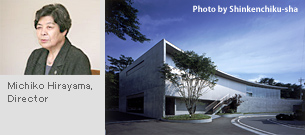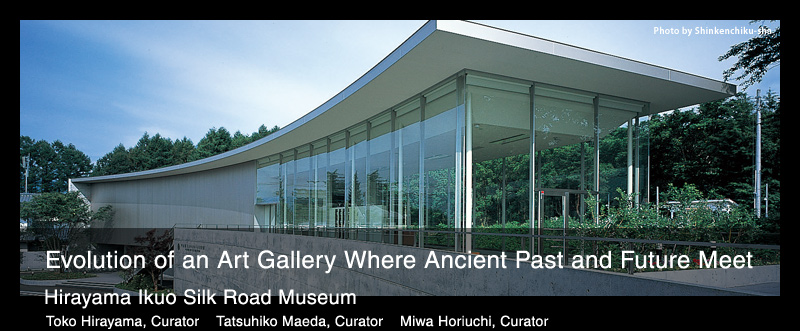Home > Museum Report > VOL.15 > Evolution of an Art Gallery Where Ancient Past and Future Meet
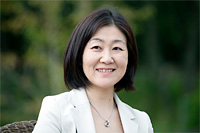 Toko Hirayama, Curator
Toko Hirayama, Curator
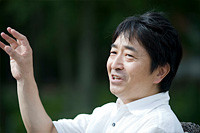 Tatsuhiko Maeda, Curator
Tatsuhiko Maeda, Curator
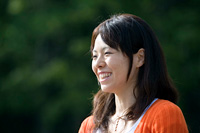 Miwa Horiuchi, Curator
Miwa Horiuchi, Curator
The Hirayama Ikuo Silk Road Museum is a unique institution because it combines one of the world's best collections of rare Silk Road artifacts, painstakingly acquired by Ikuo Hirayama and his wife Michiko over many years, with the latest works by Ikuo, a leading Japanese painter who still produces art today. Michiko serves as director of the museum, which opened in July 2004. The Hirayamas' interest in Silk Road artifacts began in 1968, when they traveled the Silk Road in search of inspiration for their artwork. Over the nearly four decades since that first journey, the couple has amassed a Silk Road Collection with pieces from 37 countries, from Rome to Japan. Exuberantly eclectic, the Hirayama collection includes an image of the Buddha from Gandhara (now in northern Pakistan), silk and cloth from Kashmir and Southeast Asia, ancient coins, sculptures, paintings, and other artifacts, numbering approximately 9,000 items in total. "At first we were just going to call it the Yatsugadake Silk Road Museum," says Toko Hirayama, a curator of the museum. "It started as a private art gallery, because Michiko wanted a place to show the artifacts she'd collected on the Silk Road to local residents. But the collection grew substantially, and many people wanted to see Ikuo Hirayama's Japanese paintings as well, so we created a foundation and called it the Hirayama Ikuo Silk Road Museum, and built a museum for use by the general public."
In July 2008, just four years after it opened, the museum's new annex was completed, doubling the total floor area. The expansion was spurred in part, says Katsuhiko Maeda, one of the curators, by the breadth of subject matter and physical size of Ikuo's works, which have been steadily increasing in recent years. "The Annex holds only the new works of Ikuo Hirayama; quite a few visitors are surprised to find that some of his works on display were created in 2008. As visitors to the museum can see, many of his works are quite large. Ruins of the Forum Romanum in Ancient Rome, which Ikuo created in September 2008 to commemorate the inauguration of the Annex, is a four-panel work 181 centimeters high and 364 centimeters wide. Without sufficient space, we would be unable to display these works in a way that does justice to their sense of power and impact on the viewer. Furthermore, visitors to our museum tend to be older, so we wanted to create a spacious, uncluttered, barrier-free environment for them to enjoy."
The space available also enables the works to be grouped by theme. The latest display cases from Kokuyo, illuminated by LED, are used throughout the annex. "Kokuyo tested these systems repeatedly until they achieved the effect we had in mind," says Maeda. "Once we were able to display these works of art in exactly the way we wanted to, we felt confident about exhibiting them to the public."
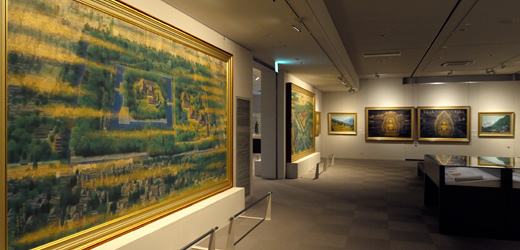
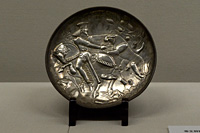
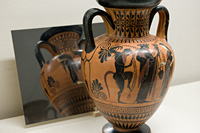
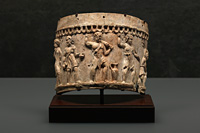
Even as he pursued his passion for artistic creation, Ikuo Hirayama served for many years as president of Tokyo National University of Fine Arts and Music (now Tokyo University of the Arts), determined to make a difference in fine arts education in Japan. Today, that strong commitment is reflected in the educational outreach activities of the museum that bears Hirayama's name. Miwa Horiuchi, the curator in charge of educational outreach programs, said:
On days when the Hirayama Ikuo Silk Road Museum is closed to the public, we open it to groups of primary- and junior-high-school students in the local community so they can learn about art during class hours. The children are free to explore the museum as they please, and we find that they react in their own ways to the things they see. Some children draw pictures, some cut out shapes in paper, and some write poems, among other things. Another activity that is in the planning stages now is a program in which Ikuo would teach children how to sketch, using natural themes such as local mountains and trees. We also plan to open a Japanese painting workshop, where parents can bring their children and work with visiting professors.
One recent event that proved to be very popular was a pottery-making program, based on the theme of monsters allegedly encountered on the Silk Road. "The Silk Road was populated by a plethora of imaginary creatures, or monsters," explains Horiuchi. "They included the Sphinx, Pegasus and Gryphon. The children looked at pictures of these fanciful beasts and sculpted images of them using clay. There were a lot of really interesting sculptures created that day!"
The museum also provides programs that adults can enjoy, such as gallery concerts and lectures. "The gallery concerts are held in front of works of art connected to the compositions or instruments being performed. This creates an atmosphere that everyone enjoys![]() not just the audience, but the musicians, too. We're just starting this program, but already it has the potential to become very popular," says Horiuchi.
not just the audience, but the musicians, too. We're just starting this program, but already it has the potential to become very popular," says Horiuchi.
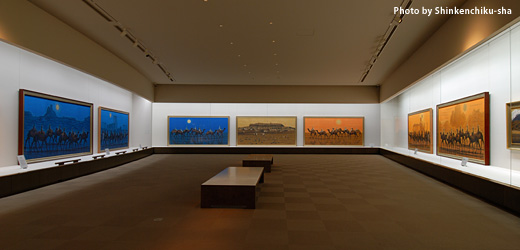
"The Silk Road was the route by which Buddhism arrived in Japan. We must not forget that today, virtually all of the characteristics of Japanese culture that we value are due to our exposure to many different countries." With these words, Michiko Hirayama, director of the Hirayama Ikuo Silk Road Museum, welcomes visitors in brochures and on the museum's Web site. "Middle Eastern countries such as Iraq, Iran and Afghanistan have more in common with Japan than we realize. Today, the impact of world affairs on those countries makes information about them hard to obtain, so we don't feel as close to them as we should. By displaying these artifacts, we hope we can raise interest in these countries' cultures, and maybe even contribute to the cause of peace in some way by deepening mutual understanding." Concerning visitors to the museum, he says:
The visitors to this museum can be split into three broad groups: those who come to view the Silk Road artifacts, those who come to see Ikuo Hirayama's Japanese paintings, and those who come to the local area for sightseeing. These factors make the positioning of this museum a challenge because we're not sure what sorts of exhibits will appeal to the people who arrive on a given day. We also use the museum as a venue for other artists to unveil their works; if they have something new to exhibit, we give them priority. For all these reasons, it's challenging to stage tightly planned exhibitions![]() a fact that can be frustrating at times
a fact that can be frustrating at times![]() but challenges are also part of what makes this job worthwhile. I think this is an especially interesting museum because we can do things that other museums and art galleries cannot."
but challenges are also part of what makes this job worthwhile. I think this is an especially interesting museum because we can do things that other museums and art galleries cannot."
Hirayama Ikuo Silk Road Museum
2000-6 Koarama, Nagasaka-cho, Hokuto, Yamanashi Prefecture 408-0031, Japan
URL: http://www.silkroad-museum.jp/
